Looking like a giant salamander, this false color image of Jupiter shows the radio wave brightness coming from around our Solar System’s largest planet. The shape is caused by charged particles erupted off of its volcanic moon, Io, barreling along Jupiter’s gigantic magnetic field. The data were taken by the Very Large Array (VLA).
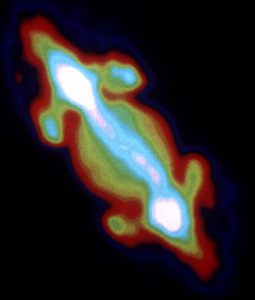
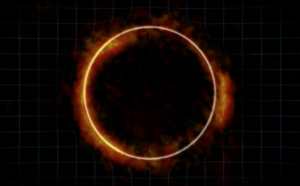
Animation of a Gravitational Lens Creating an Einstein Ring
Animation demonstrating how the gravity from a massive foreground galaxy can bend the light of a more distant galaxy. If the two galaxies line up just right, the result is a highly distorted image of the distant galaxy known as an Einstein ring. The radio image portion of the video is of galaxy SDP.81, which was imaged by ALMA as part of the telescope’s Long Baseline Campaign.
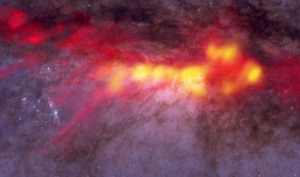
NGC 253: Why Starburst Galaxies Burst
Animation of ALMA data reveals a diffuse envelope of carbon monoxide gas (shown in red), which surrounds stellar nurseries — regions of active star formation (in yellow). By dissecting these regions with ALMA, astronomers are uncovering clues to the processes and conditions that drive furious star formation. The ALMA data are superimposed on a Hubble image that covers part of the same region.
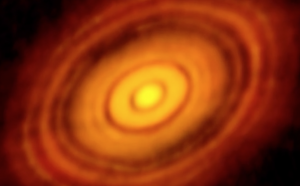
NRAO Video Webcast: HL Tau
NRAO Director Tony Beasley discusses the impact of ALMA’s new high resolution observations of HL Tau.
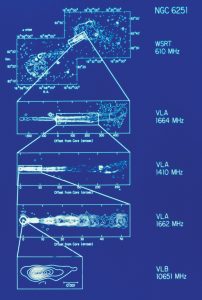
Zooming into a Black Hole
This collection of data from a powerful radio galaxy known as NGC 6251 shows the increase in detail astronomers get when they use the Very Large Array and the Very Long Baseline Array. The VLA sees the blobbiness along the jet of material shooting out of a supermassive black hole. The VLBA can see down into the area right around that black hole.
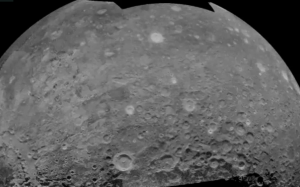
Moon Movie in Radar
This movie was created from radar images collected using a transmitter at the Arecibo Observatory (AO) in Puerto Rico and receivers at the Green Bank Telescope (GBT). Radar maps can look like photos, but they represent the amount of energy reflected back toward the transmitter by features on the Moon’s surface. The radar penetrates 10 meters or more into the very dry lunar surface, revealing variations in the abundance of rocks larger than about 10 cm across and seeing differences in the chemistry of rocks that form the Moon’s crust. The movie begins with a view of the north pole of the Moon – the center of the side we can see from Earth is at top. The rotation carries us around the visible edge of the Moon, past the south pole, the giant Orientale basin, and back to the north pole.





